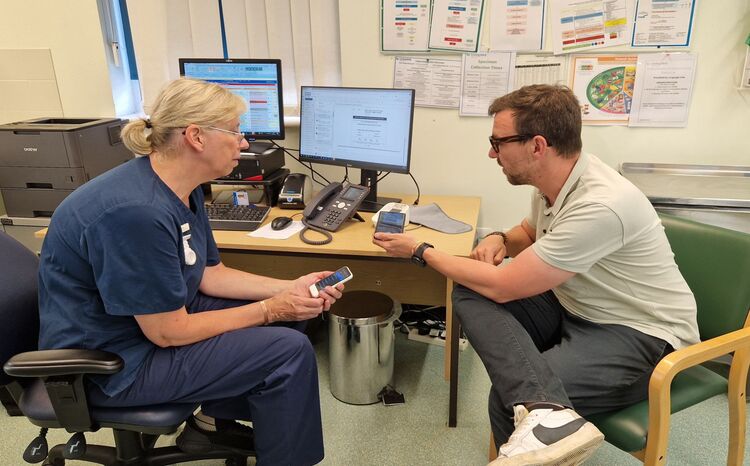Changing the rules of the game to future proof general practice
- 24 May 2022

Dr Helen Davies, a practising GP for over 30 years and clinical director at Doctrin, warns of the dangers of not aligning incentives when it comes to government’s primary care reforms and sets out the opportunity for tech-enabled change.
Sajid Javid has primary care reform in his sights, describing the current model as “outdated” and wanting to cut 8am surgery phone queues. There’s also an independent review into Primary Care Networks (PCNs)/ICS development, and the Rebuild General Practice campaign, which calls for government to tackle workforce pressures and re-introduce continuity of care.
They are right to demand change – GPs are leaving faster than they can be recruited, with practitioners choosing early retirement and fewer people wanting to enter general practice. And despite government’s plans to recruit 5,000 GPs by 2020, the latest GP Work life Survey showed 12,000 GPs intend to quit within 5 years.
Our under-resourced workforce, increasing demand on services, backlog from covid and an ageing population, means primary care is at breaking point. Without support and the right incentives to enable general practice to take its place in the new ICS landscape, there is a risk of losing what the profession can offer as it continues to irretrievably bleed out.
And government is pushing on an open door to innovate the sector. General practice has shown how it’s responsive and agile, with the success of nearly all practices hitting QoF targets since their inception, the forming of PCNs, and delivering the rollout of covid vaccines, while embracing the rapid expansion of technology and new ways of working during the pandemic.
However, while policymakers are good at setting out aspirational plans, there are some practical barriers that could prevent these much-needed changes from becoming a reality, that we need to address together.
Enablers for change
The vision for general practice – within the integrated care system – is to be at the heart of locality networks, which will ultimately encompass other organisations delivering locality care beyond what is done currently in PCNs. Primary care is well placed to drive this transformation – as the traditional co-ordinators of care for patients within the system, as experts in generalist clinical, holistic, and complex care, and with a deep understanding of practice populations and the community.
However, this cannot be in addition to the crippling existing workload. So what can change? Financial and contractual drivers need to align with this direction of travel – they need to move away from the traditional focus on rewards for delivery such as QoF and vaccination targets, to more population-based outcomes, for GPs to be able to allocate skills appropriately, provide tailored care to patients and make better use of technology.
Allocate skills
Ultimately GPs need to be able to work at the top of their licence. We are skilled to manage the complex issues, whilst most of the routine care can be managed by wider multi-disciplinary teams, such as pharmacists, social prescribing link workers, dieticians etc. Additionally, more patient care can be delivered by other providers, as has been increasingly happening over the years – I remember the days when we used to do it all, without community specialist nurses, outreach services or an out of hours provision!
Moreover, the NHS continues to evolve, with innovations such as remote monitoring and virtual wards on the horizon. Covid has also shown how statutory health, social and private providers can work together to identify and deliver joined-up, targeted care to vulnerable groups. And the collaboration to rapidly deliver the Covid vaccination programme has shown the wealth of voluntary and community resources.
Tailor care
Therefore, rather than offering the same size fits all model, GPs need to be able to respond to the differing needs of patients. Those individuals with ad-hoc acute illnesses won’t necessarily need or want a face-to-face appointment or continuity of care, whereas those with long term, complex or palliative conditions will. It’s about offering a range of ways to consult and receive support and care, that benefits the patient and the workforce.
Use of technology
The intelligent adoption of technology is offering out-of-the-box transformation of healthcare, with visible linked data enabling us to prioritise and personalise care like never before. We can manage our workload and smooth the patient journey via powerful enablers like digital triage and care navigation, and we have the potential for greater connectivity and dialogue with our patients via consultation platforms.
And this technology is already available and being implemented. For example, Lakeside Healthcare – a group of GP practices in the East Midlands – is deploying an end-to-end care navigation platform called Doctrin.
Directing patients to the most appropriate team from the outset has resulted in less than 10% of the initial consults requiring a GP appointment. And it’s improved patient satisfaction from 25% to over 92%.
The real-time analysis of periods of high demand and most common requests from patients also enables the surgeries to plan their workforce accordingly and to share resources and provide care at scale. For example, diabetes patients being cared for by a PCN specialist nurse, and sites struggling with capacity being supported by others. It’s also helping to stop the 8am calls for an appointment – patients can submit a request when it suits them, and are guaranteed a response within 24 hours.
Scale best practice
It is heartening to hear government’s ambition to encourage technology adoption – helping address service demand – but all options must be considered, including sharing what is working well and implementing change quickly.
Success stories need to be celebrated, and this best practice baked into ICS plans. And government needs to support service providers in scaling up these solutions across an ICS, including changing the “rules of the game”.





1 Comments
This is an excellent article . I am now a retired GP but I think the future of General Practice needs to be developed in collaboration with private health providers contributing to dealing with backlogs and organisation. There also needs to be much more Government cooperation with private healthcare to reduce the hospital backlog. The apparent absence of any Government publicity demonstrating how the Government would do this is regrettable.
Comments are closed.